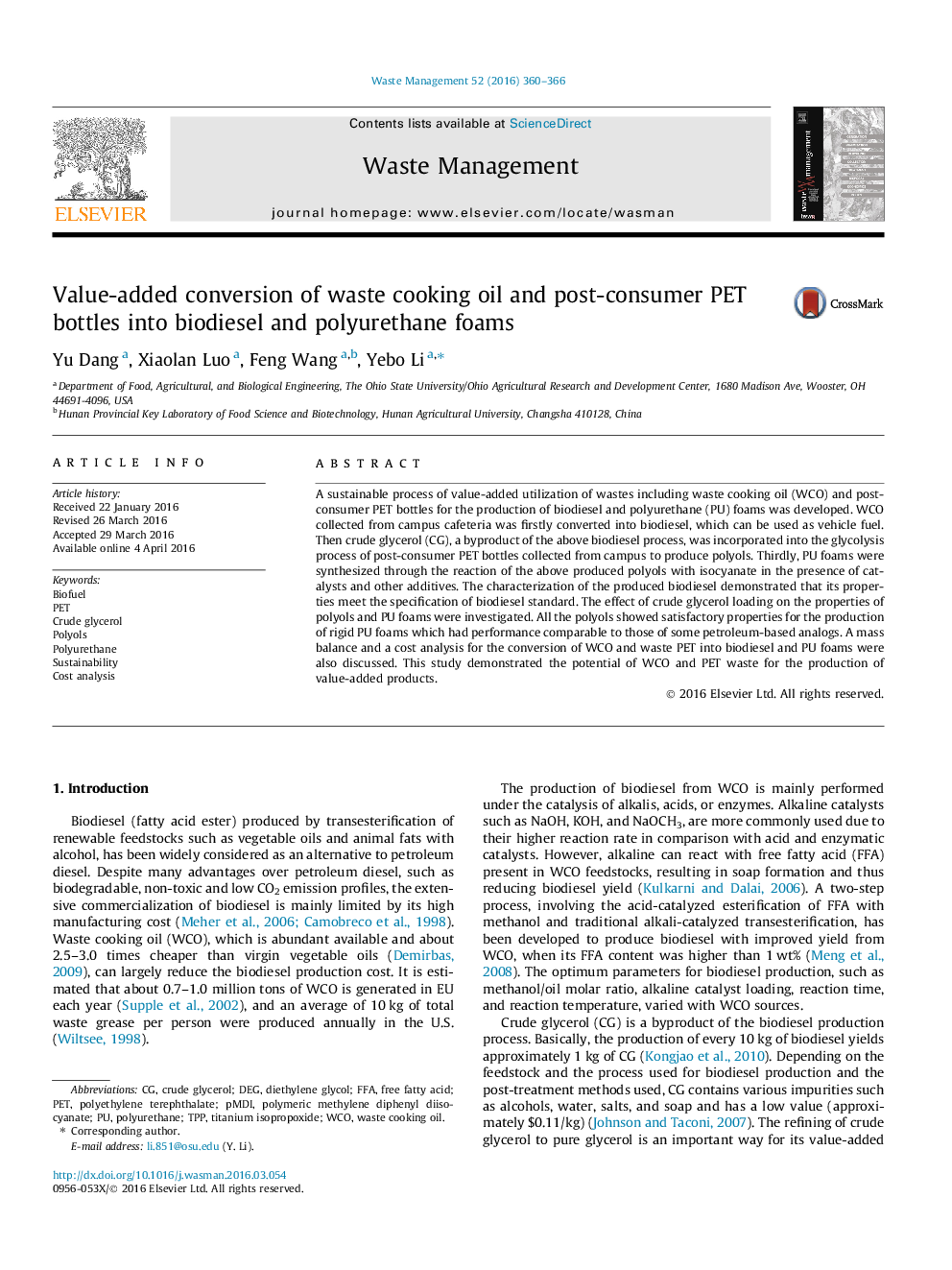| Article ID | Journal | Published Year | Pages | File Type |
|---|---|---|---|---|
| 4471259 | Waste Management | 2016 | 7 Pages |
•Conversion of waste cooking oil and PET bottles to biodiesel and polyurethanes.•Crude glycerol from biodiesel process was used in the glycolysis of PET to prepare polyols.•The effect of crude glycerol loading on the properties of polyols and PU foams was studied.•Mass balance and cost analysis of the processes were performed.
A sustainable process of value-added utilization of wastes including waste cooking oil (WCO) and post-consumer PET bottles for the production of biodiesel and polyurethane (PU) foams was developed. WCO collected from campus cafeteria was firstly converted into biodiesel, which can be used as vehicle fuel. Then crude glycerol (CG), a byproduct of the above biodiesel process, was incorporated into the glycolysis process of post-consumer PET bottles collected from campus to produce polyols. Thirdly, PU foams were synthesized through the reaction of the above produced polyols with isocyanate in the presence of catalysts and other additives. The characterization of the produced biodiesel demonstrated that its properties meet the specification of biodiesel standard. The effect of crude glycerol loading on the properties of polyols and PU foams were investigated. All the polyols showed satisfactory properties for the production of rigid PU foams which had performance comparable to those of some petroleum-based analogs. A mass balance and a cost analysis for the conversion of WCO and waste PET into biodiesel and PU foams were also discussed. This study demonstrated the potential of WCO and PET waste for the production of value-added products.
